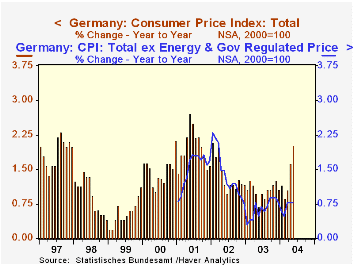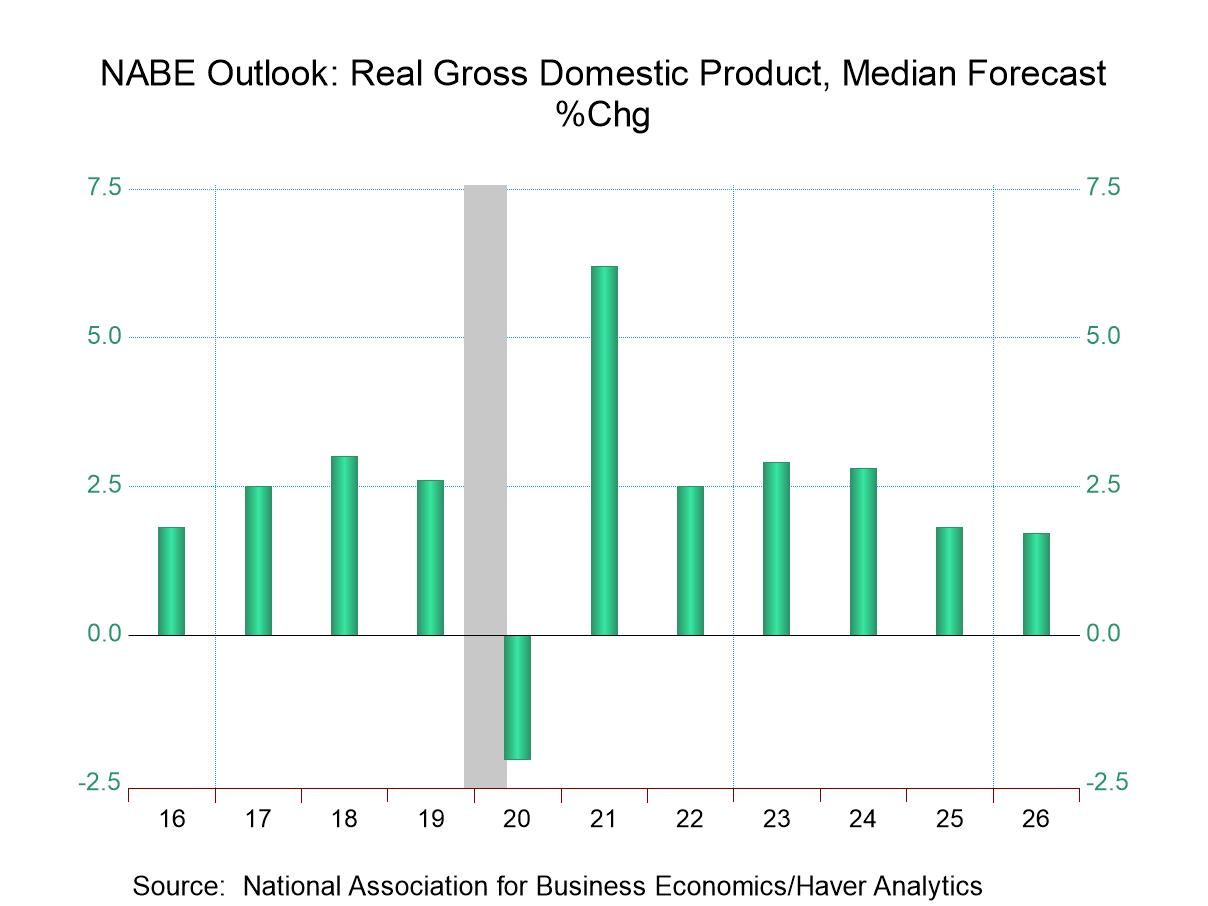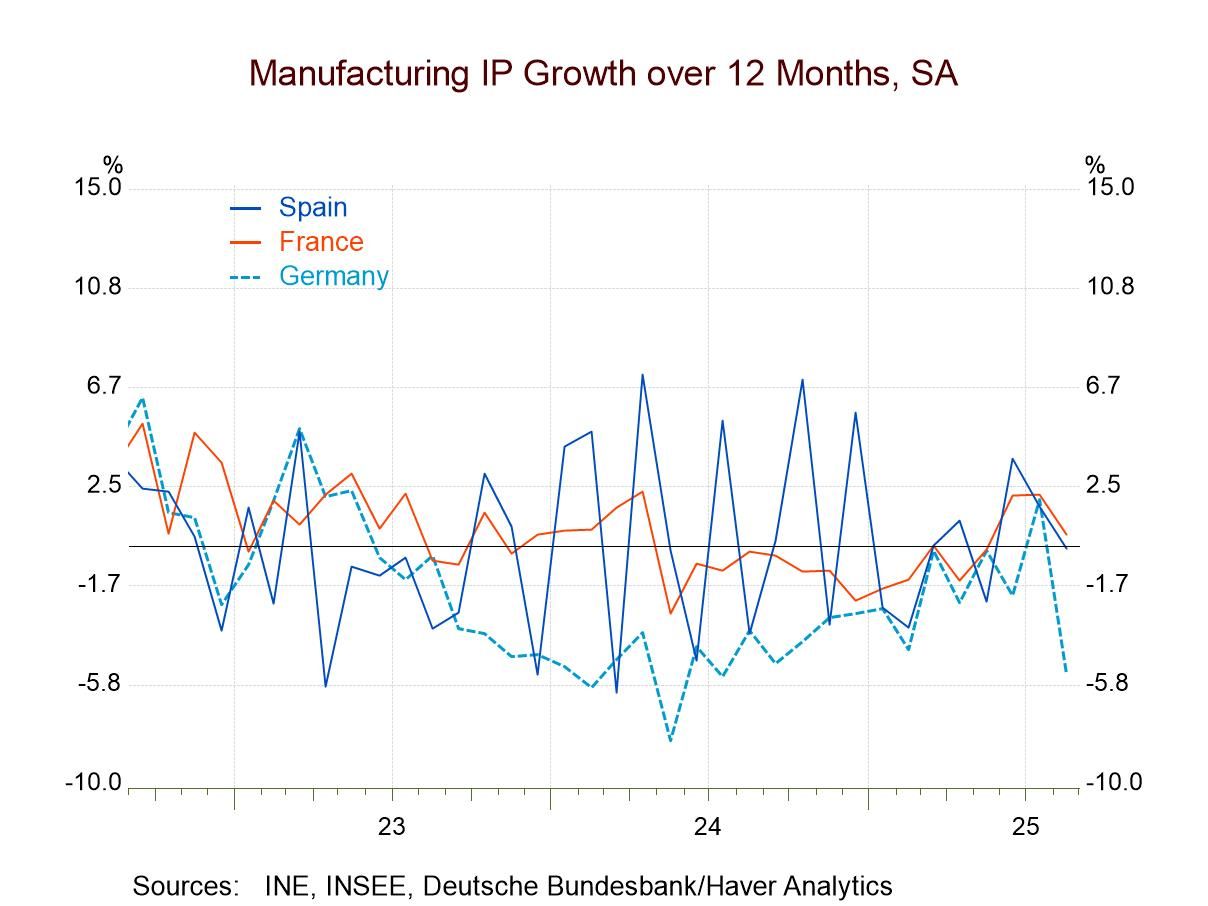 Global| Jun 09 2004
Global| Jun 09 2004German CPI has largest 12-Month rise in 2 years, due to energy, government-regulated sectors
Summary
Germany's CPI picked up in May, driving mainly by higher energy prices, particularly gasoline. The year-on-year rate was 2.0%, up from 1.6% in April and the strongest advance since March 2002. The impact of energy is seen in the [...]

Germany's CPI picked up in May, driving mainly by higher energy prices, particularly gasoline. The year-on-year rate was 2.0%, up from 1.6% in April and the strongest advance since March 2002. The impact of energy is seen in the Bundesbank's seasonally adjusted series that excludes energy, which did not accelerate in May and, in fact, was virtually flat on a month-to-month basis.
Another influential aspect of Germany's consumer pricing structure is government- regulated prices, and these too have boosted the CPI this year. These prices as a group were hiked 3.2% in January, the largest boost since 1993. Health care costs were apparently the prime mover, along with elementary education expenses. Tobacco prices were raised in March.
Otherwise, private market prices remain soft. Household furnishings, apparel and transportation costs (excluding fuel) have all remained steady or even weak.
This mixed pattern suggests that true inflationary pressure has not yet developed in Germany. Factors largely external to domestic market forces are pushing up some prices, but those that are flexible seem to be staying down, offsetting at least some of the impact of the managed price hikes.
| % Changes | May 2004 | Apr 2004 | Mar 2004 | December/December|||
|---|---|---|---|---|---|---|
| 2003 | 2002 | 2001 | ||||
| Total (SA) | 0.2 | 0.3 | 0.4 | -- | -- | -- |
| Yr/Yr (NSA) | 2.0 | 1.6 | 1.1 | 1.1 | 1.2 | 1.6 |
| Total Ex Energy (SA) | 0.0 | 0.2 | 0.4 | -- | -- | -- |
| Yr/Yr (SA) | 1.6 | 1.6 | 1.3 | 1.2 | 0.7 | 2.0 |
| Total Ex Energy & Gov't Regulated Prices, Yr/Yr (NSA) | 0.8 | 0.8 | 0.8 | 0.8 | 0.8 | 1.7 |
Carol Stone, CBE
AuthorMore in Author Profile »Carol Stone, CBE came to Haver Analytics in 2003 following more than 35 years as a financial market economist at major Wall Street financial institutions, most especially Merrill Lynch and Nomura Securities. She had broad experience in analysis and forecasting of flow-of-funds accounts, the federal budget and Federal Reserve operations. At Nomura Securities, among other duties, she developed various indicator forecasting tools and edited a daily global publication produced in London and New York for readers in Tokyo. At Haver Analytics, Carol was a member of the Research Department, aiding database managers with research and documentation efforts, as well as posting commentary on select economic reports. In addition, she conducted Ways-of-the-World, a blog on economic issues for an Episcopal-Church-affiliated website, The Geranium Farm. During her career, Carol served as an officer of the Money Marketeers and the Downtown Economists Club. She had a PhD from NYU's Stern School of Business. She lived in Brooklyn, New York, and had a weekend home on Long Island.





